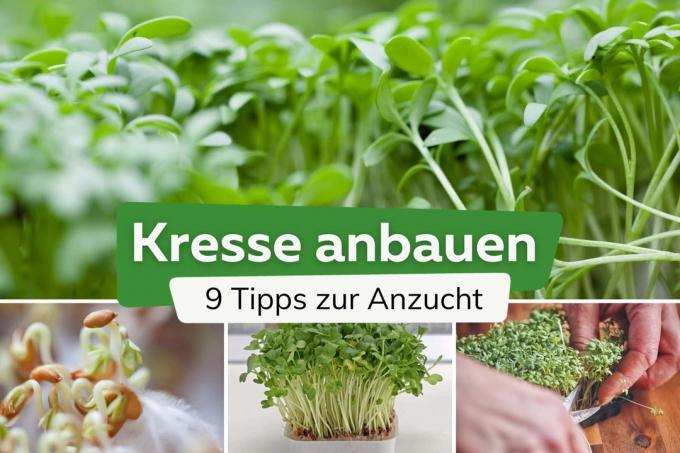
Growing cress is very easy. It doesn't require a lot of prior knowledge, nor do the plants need much care and the herb is ready to harvest after just a few days.
To the point
- Cress is very easy to care for
- can be planted indoors or in the garden
- doesn't need fertilizer
- When using the seedlings, no substrate is required for cultivation
Table of contents
- Location in the house
- Location in the garden
- Substrate
- Attach without substrate
- sowing
- Pour
- Fertilize
- harvest
- Let it grow out
- frequently asked Questions
Location in the house
Cress can be grown anywhere and has hardly any special location requirements. It should just be sufficiently bright and not too cold. Drafts that could quickly dry out the substrate should also be avoided. A south-facing window is too warm, which can also lead to drying out.
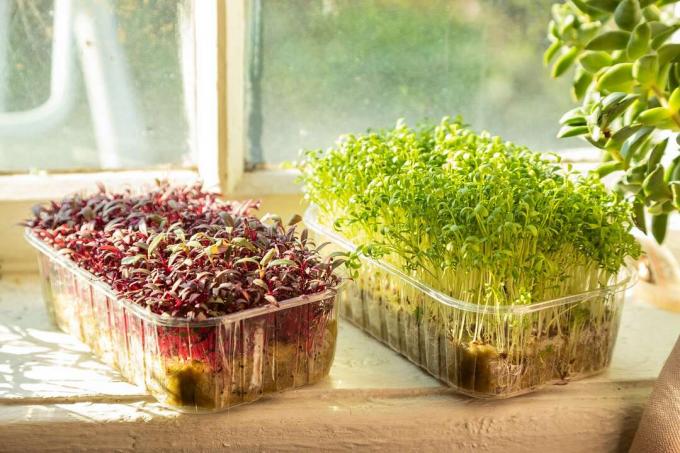
Location in the garden
Cress can also be grown in the garden from spring to autumn. There it should be given a partially shaded, not too warm and not too dry place. Since the growing season is relatively short, cress is ideal for briefly filling gaps.
Substrate
The following substrates are suitable for growing cress:
- garden soil
- Compost soil
- Herbal soil
- potting soil
- Potting soil
Basically, almost any soil is suitable because the cress only has to grow in it for a very short time. Soil that has already been used for cress is not suitable. For subsequent crops, it is better to replace the substrate.
Attach without substrate
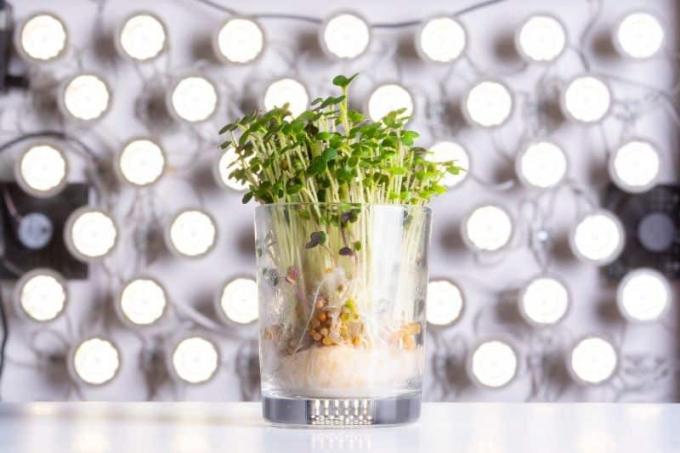
Since cress is extremely undemanding, it even needs no substrate at all for cultivation. Instead, she can on cotton wool, kitchen paper or similar. This also has the advantage that the plants stay cleaner and no pathogens can be transferred from the soil to the plants.
sowing
Cress can be sown in classic rows as well as widely. This has the advantage that it is not necessary to draw a row and work precisely.
In the garden it makes sense to prepare the seedbed very well. For this everyone will larger stones and any weeds are removed and the area is then raked very smooth.

The seed is scattered on the substrate or moistened cotton wool and not covered. If the cress is sown on soil, it is sufficient to cover it with its back rake press well. The soil is then moistened.
Notice: Do not water the seeds too much, otherwise they will float away. It is better to moisten the soil before sowing.
Germination temperatures:
- in the garden from 15 degrees
- in the house all year round
- not too warm
Pour
To ensure that the cress germinates quickly and evenly, it is important to keep it moist. This always applies, no matter where the cress is sown and whether with or without substrate. It is important not to use a jet of water that is too hard. In the house, the spray bottle is often sufficient.
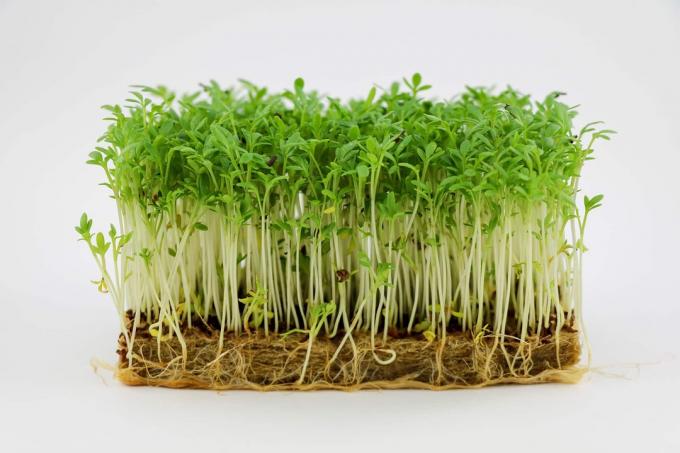
Fertilize
Fertilizing the cress is unnecessary because it is already used as a seedling and any soil provides enough nutrients for seedlings. If soil needs to be improved before use, it is best to use compost soil.
harvest
Harvesting cress is very easy. It is cut off with scissors just above the surface of the soil. Since these are only seedlings, the cress will not continue to grow afterwards. However, it can be sown again immediately with new substrate.
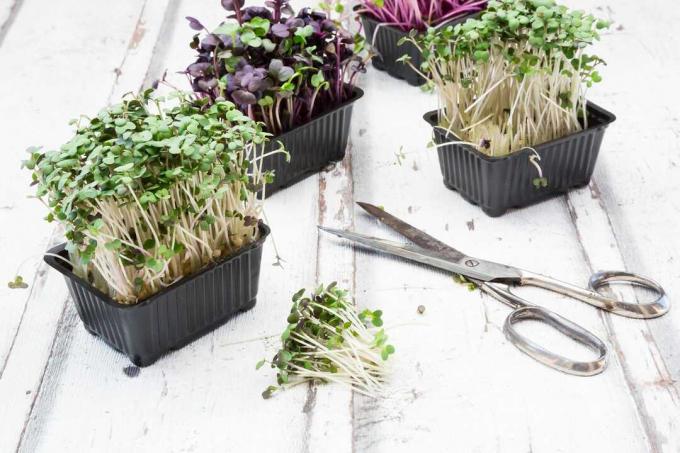
Notice: Cress is usually ready to harvest after just a few days.
Let it grow out
Even though cress is usually used as a very young plant, it is possible to grow it in the garden. Please note the following:
- choose a larger planting distance
- eliminate emerging weeds
- do not let it dry out
- Whole plant, including roots and pods that form after flowering are edible
- not hardy
- If only a little is cut off, the plant will continue to grow steadily
frequently asked Questions
In addition to the normal garden cress, the cultivation of which has been described here, there is also watercress Nasturtium, but they have different needs. Watercress grows exclusively in shallow water, while nasturtiums like to climb and grow very large.
This is not recommended in summer as it quickly becomes too warm and the ground becomes too dry. In winter, however, a greenhouse or cold frame can offer the opportunity to grow cress as long as they are not too cold. The advantage is that the cress doesn't take up any space in the house and doesn't get buried under snow outside.
Since the growing season is very short, cress is usually spared from diseases or pests. At most, fungi that attack young plants and cause them to die can be a problem. The remedy, however, is to grow the cress without a substrate.



